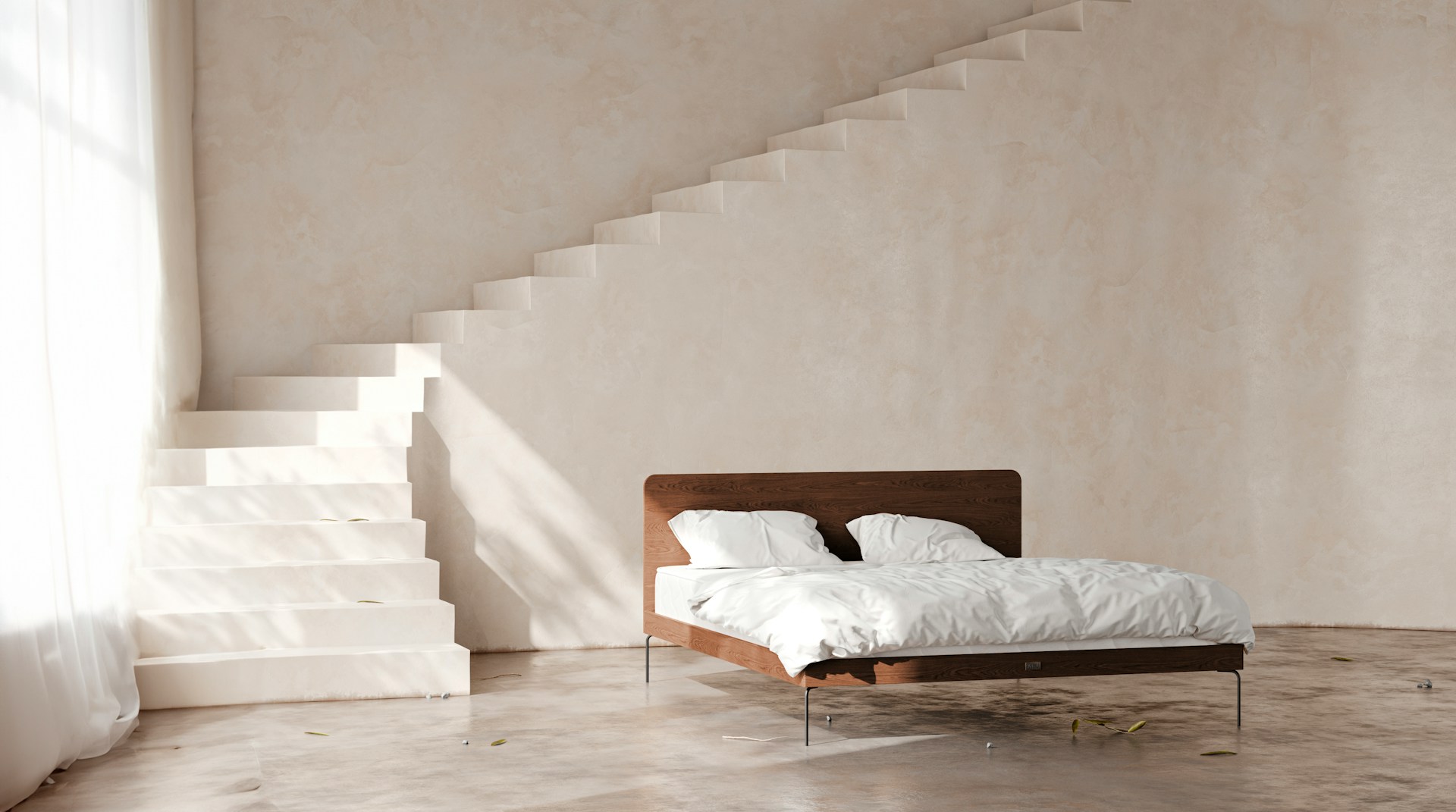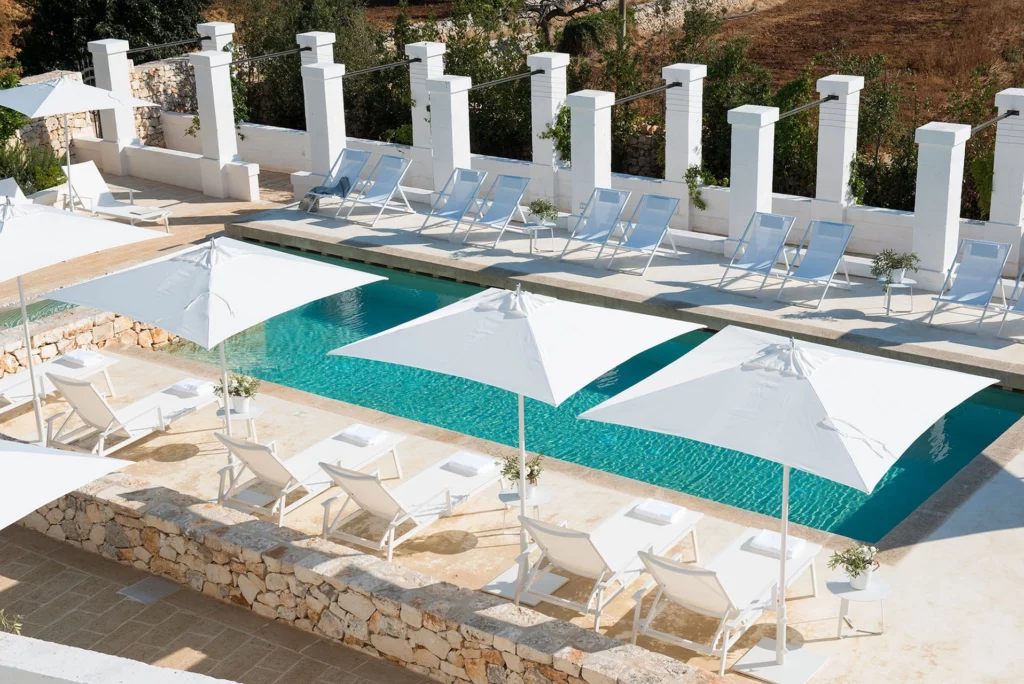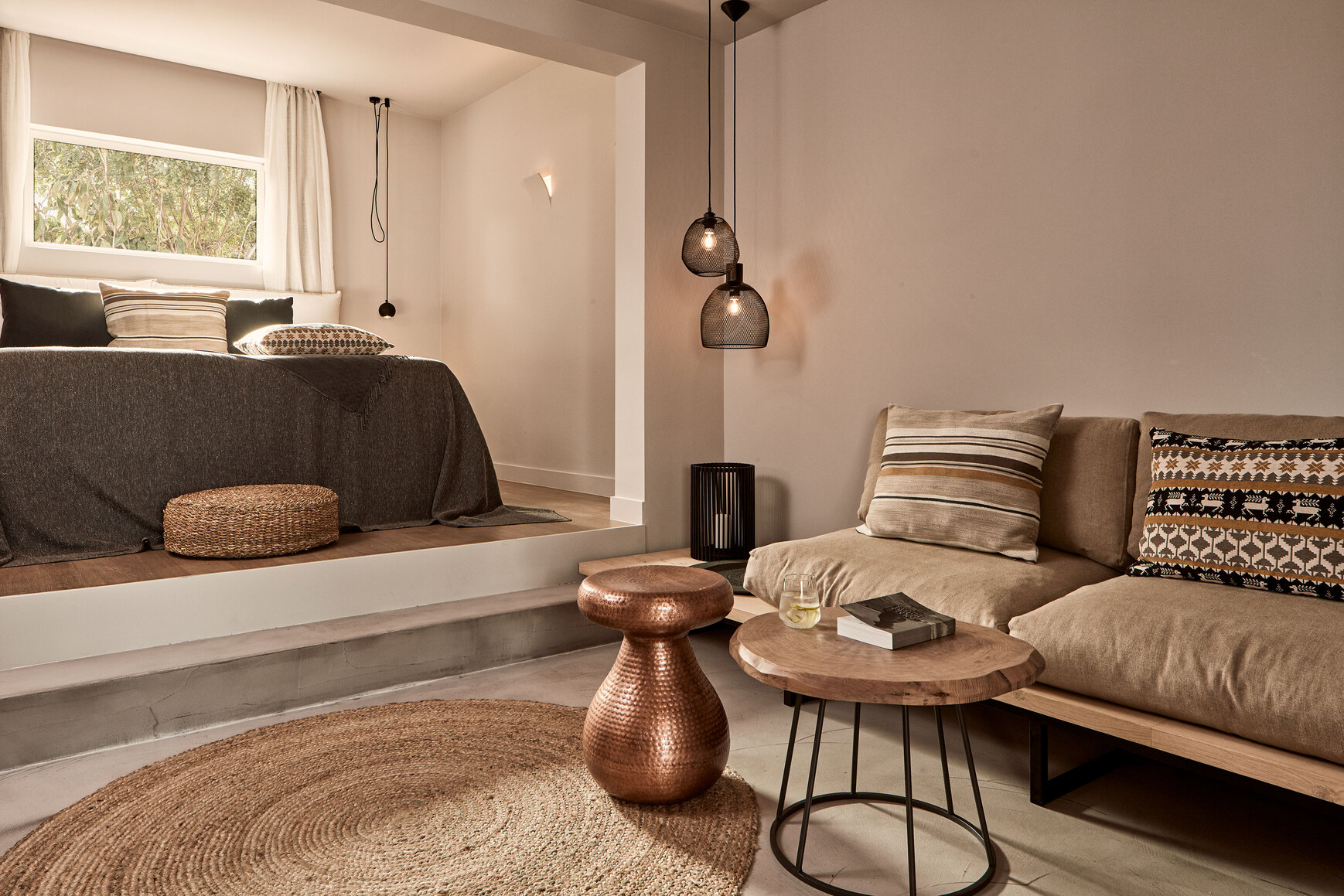The New Mediterranean Aesthetic: Calm Tones, Honest Materials, Real Spaces
Discover the new Mediterranean aesthetic across Spain, Italy, Greece and Portugal. Natural materials, warm minimalism and boutique hotels where design feels quietly, beautifully real.

There is a moment in the Mediterranean that is hard to capture if you do not sit still for a second. The light dips, walls soften into warm pink and chalky beige, the scent of herbs rises from gardens and terraces, and the air slows down. That moment is not a postcard. It is a reference point. A way of building, living and designing that is finally being understood for what it truly is.
The new Mediterranean aesthetic has little to do with the clichés that once defined it. No overloaded blue palettes. No staged rusticity. No theatrical arches built for social feeds. This movement is about calm, space and the kind of beauty that does not need to explain itself.
Hotels across Spain, Italy, Greece and Portugal are redefining this language with confidence. They use natural materials, soft tones and shapes that feel lived in rather than performed. The result is an aesthetic that feels modern without chasing trends, and timeless without relying on nostalgia.
What Mediterranean Design Really Means Today
For years, Mediterranean interiors were simplified into a theme. White walls, blue shutters, terracotta pots and predictable styling. Pretty, but soulless.
The new aesthetic strips that away and focuses on what the region has always offered naturally.
Soft Tones and Natural Pigments
Colours come from minerals, not paint presets. Think clay, sand, olive, chalk and warm grey. These tones do not fight the light. They absorb it slowly.
Materials That Feel Real
Stone, wood, limewash, rough ceramics, linen that wrinkles without shame. Everything is tactile, breathable and quietly imperfect.
Architecture That Breathes
Rooms open to courtyards, patios or the sea. Light filters through instead of flooding aggressively. Shade is treated as a design tool, not a compromise.
Comfort Over Performance
Spaces are built to be lived in, not photographed. A chair where you immediately want to sit. A floor that feels cool under your feet. A room that invites slow mornings.
This aesthetic is not decorative. It is atmospheric.
Spain: Townhouses, Sea Light and Quiet Glamour
Spain understands Mediterranean light in all its forms. The golden tone of Palma’s old town, the deep blue of Ibiza’s cliffs, the gentle pink that appears just before sunset.
Posada Terra Santa, Palma de Mallorca
A medieval townhouse in Palma turned into a quiet, elegant refuge. Stone arches, warm walls, wooden beams and rooms designed for long, slow mornings. Light slides across textures, not surfaces. Everything feels calm without losing character.
Hacienda Na Xamena, Ibiza
Suspended above the sea, this hotel shows what happens when architecture follows the cliff instead of dominating it. White volumes, terraces that float between sky and water, and interiors stripped back to essentials. Blue from the sea, white from the walls, green from the landscape. Nothing else needed.
Spain proves that Mediterranean design can be both urban and coastal, discreet and theatrical, as long as it respects the material honesty of the region.

Italy: Between Cliffs, Olive Trees and Old Stone
Italian Mediterranean design is understated but deliberate. It does not pretend to be rustic. It does not pretend to be modern. It simply follows the landscape and the history of each region.
Borgo Santandrea, Amalfi Coast
A hotel that seems to grow out of the cliffside instead of being placed on it. The architecture descends gently toward the water. Interiors mix white, navy and soft stone with tiles that whisper rather than shout. Views do most of the work. Rooms do the rest by staying calm and precise.
Masseria Le Torri, Puglia
A whitewashed farmhouse restored with extraordinary restraint. Thick walls, pale stone floors, linen in soft neutral tones, olive trees framing each room. The design is so simple that it becomes luxurious. Every corner feels like it has existed for decades, even when it is new.
Italy shows that Mediterranean design thrives when it does not need to perform.

Greece: Light, Water and Quiet Geometry
Few places in the world understand minimalism as instinctively as Greece. The country has always worked with the bare essentials: white, stone, water and sky.
F Zeen Kefalonia
Terraced into the hillside with a view that stretches across the Ionian Sea. Wood, stone and earth tones anchor the rooms, while the landscape overwhelms everything else. It is modern, but it feels ancient in the best possible way.
Minos Beach Art Hotel, Crete
Low buildings scattered along the water, pathways under trees, sculptures hidden between gardens. Rooms use gentle palettes, light textiles and forms that blend into the setting. Nothing is polished to perfection. Everything feels touched by salt and sun.
Santo Pure, Santorini
A contemporary interpretation of Cycladic architecture. Rounded walls, soft geometry, private pools framed by volcanic stone. Suites arranged like a small whitewashed village, each with its own patch of sky. It is Santorini without the theatricality.
Greece shows the power of restraint when nature is this overwhelming.

Portugal: Atlantic Air, Mediterranean Soul
Portugal may not sit on the Mediterranean, but much of its design language feels at home in this aesthetic. Whitewashed walls, dry landscapes, slow architecture and interiors built to calm the senses.
Vermelho Melides
A small hotel wrapped in terracotta floors, handcrafted tiles and warm pigments. The design is intimate and deeply personal, almost like staying in a friend’s artistic home rather than a hotel.
Vinha Boutique Hotel, Porto region
Soft light, pale walls, stone and wood. Rooms feel elegant without stiffness. Public spaces feel lived in rather than staged. The atmosphere is serene, not silent.
Salvaterra Country House & Spa
Wooden structures, natural tones, outdoor living woven into indoor comfort. It feels like a retreat made for people who want to disappear into peace for a few days.
Portugal reveals that the Mediterranean aesthetic is not a geography but a rhythm.

Why the Mediterranean Aesthetic Works So Well Now
The world is visually noisy.
Screens, feeds, notifications, hard colours, aggressive light. People crave spaces that soften the edges.
This aesthetic answers that need. It offers:
-
visual quiet
-
natural textures
-
warm minimalism
-
rooms that breathe
-
light that settles gently
It is the opposite of fast design. It is a return to presence.
Hotels embracing it are not chasing trends. They are responding to a collective desire for calm, softness and places where the body settles before the mind even notices.
How to Recognise a Well Designed Mediterranean Space
You feel it before you analyse it.
-
Light enters without shouting
-
Colours let your eyes rest
-
Materials invite your touch
-
Shade feels intentional
-
You instinctively slow down
If a room looks impressive online but feels tense in person, it is not Mediterranean design.
It is theatre.
More Than a Style
The new Mediterranean aesthetic is not a visual trend. It is a way of living that values air, time, shade and comfort. Terraces, courtyards, verandas and siestas existed long before lifestyle magazines. Hotels are simply remembering what locals never forgot.
Design has finally caught up with the region’s natural wisdom.
Beauty here is confident but soft, quiet but steady. It does not need perfection. It needs presence.